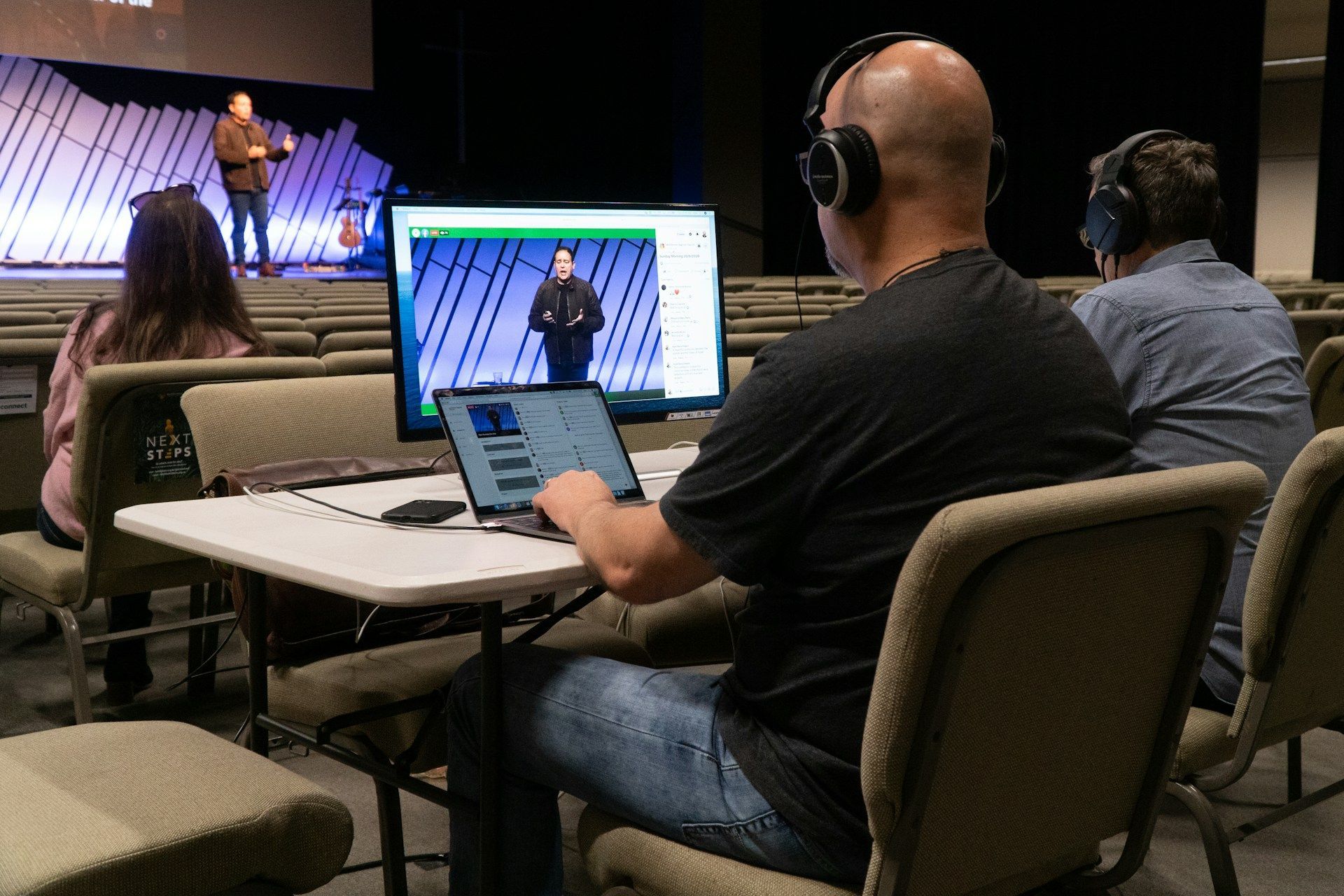Top 10 Essential Features for Your Church or Non-Profit Website
When it comes to creating a website for your church or non-profit organization, having the right features in place is crucial for connecting with your audience, sharing your mission, and encouraging support. In today's digital age, a well-designed and user-friendly website is the foundation for any organization's online presence.
With this in mind, we have created a list of the top 10 essential features to include on any church or non-profit website. From event calendars and donation forms to multimedia integration and responsive design, these key elements will help ensure your website is visually appealing and serves the needs of your community and supporters. Read on to learn about each feature and how Faithworks Marketing can assist in crafting the perfect website tailored to your organization's unique requirements.
1. Responsive Web Design
Ensuring your website is accessible and user-friendly across devices is crucial in today's digital landscape. A responsive web design allows your site to adapt its layout to the screen size, ensuring optimal user experience on desktop, mobile, and tablet devices. According to a study by the Pew Research Center, nearly 81% of Americans own a smartphone, making prioritizing a mobile-friendly website experience essential. Faithworks Marketing can create a responsive design for your church or non-profit website to guarantee your users an enjoyable and hassle-free browsing experience.
2. Event Calendars and Registration Forms
An up-to-date event calendar is vital for your church or non-profit website. This feature allows visitors to stay informed about current and upcoming events and activities. Including user-friendly registration forms can enable potential attendees to register for events quickly and easily. Faithworks Marketing can help you design and implement an intuitive event calendar that your organization can easily update and manage.
3. Secure Online Donations
Online donations are an essential aspect for many churches and non-profit organizations. Offering a secure, user-friendly donation form can encourage potential donors to contribute to your cause. According to a study by the Nonprofit Source, 54% of donors prefer to give online, with a credit or debit card. Incorporating SSL (Secure Sockets Layer) technology and partnering with reputable payment processors can ensure your users' personal information is safe during donation. Faithworks Marketing can help set up seamless donation forms and ensure the process is secure for you and your donors.
4. Multimedia Integration
Sharing multimedia content, such as images, videos, and audio files, effectively engages and informs your audience about your organization's activities and mission. Multimedia integration allows users to experience your services, listen to podcasts, or watch video testimonials directly on your website. The State of Video Marketing study showed that 85% of businesses use video as a marketing tool, making it a valuable resource for your organization's online presence. Faithworks Marketing can assist with the integration of various multimedia formats on your website in a user-friendly and accessible manner.
5. Engaging Blog Section
A regularly updated blog section is essential for engaging your community members, sharing organization updates, and showcasing the impact of your work. Consistently posting relevant content also enables your website to rank higher on search engines, attracting new visitors. Your blog should cover a range of topics, such as ministry updates, event announcements, and informative resources on your organization's area of expertise. Faithworks Marketing can help you create a content strategy for your blog and ensure it aligns with search engine optimization (SEO) best practices.
6. Social Media Integration
Integrating social media into your website is crucial for building connections and network with your audience, encouraging them to interact with your organization across various platforms. Sharing social media feeds or using social sharing buttons allows users to share your content with their network, increasing your organization's visibility and reach. According to the Global Digital Report, there are over 4.4 billion social media users globally. Faithworks Marketing can help you effectively integrate various social media platforms into your website, ensuring maximum engagement for your audience.
7. Contact Information and Forms
Providing clear and easily accessible contact information is a must for any church or non-profit website. Offering various contact methods, such as a phone number, email address, and physical location, ensures that your visitors can easily reach out to you. A contact form allows users to submit inquiries or request support directly through your website. Faithworks Marketing can help design and implement user-friendly contact methods that encourage audience engagement and communication.
8. Volunteer Opportunities
Displaying volunteer opportunities and application forms on your website is an excellent way to engage your audience and encourage active participation within your organization. Creating a dedicated section for volunteer opportunities allows you to easily inform and inspire site visitors to contribute their time and skills to your organization. Faithworks Marketing can help you create an engaging and organized volunteer section that attracts potential volunteers.
9. Search Engine Optimization
Optimizing your website for search engines is crucial for increasing online visibility and attracting new visitors. Effective search engine optimization (SEO) techniques include keyword research, relevant metadata, and high-quality content. A well-optimized website leads to higher search engine rankings and increased organic traffic. Faithworks Marketing can provide comprehensive SEO services for your organization's website to ensure it reaches your target audience.
10. Testimonials and Success Stories
Featuring testimonials and success stories on your website can help build trust with your audience and demonstrate the impact of your organization's work. Highlighting real-life stories from staff, volunteers, or community members shows potential supporters the value of their contribution. According to Nielsen's Global Trust in Advertising Report, 92% of consumers trust recommendations from people they know over other forms of advertising. Faithworks Marketing can help showcase your success stories and testimonials in a visually appealing and engaging manner.
Creating a Lasting Impact with Your Church or Non-Profit Website
In today's digital world, having a functional, user-friendly, and engaging website is essential to the growth and success of your church or non-profit organization. By incorporating these top 10 essential features, your organization can connect with your community, share important updates, and encourage donations and support. Working with a trusted partner like Faithworks Marketing can help you achieve the optimal web presence that resonates with your audience and, ultimately, supports the realization of your mission and vision.
Are you ready to elevate your church or non-profit website? With Faithworks Marketing's expertise in web design, content strategy, and online marketing, you can confidently create a website that is visually appealing and serves the needs of your community and supporters. Our team specializes in crafting custom websites tailored to churches and non-profit organizations, ensuring that the final result truly reflects your unique requirements and objectives.
Don't miss out on the opportunities that come with having a powerful online presence. Contact Faithworks Marketing today to begin the process of creating the ideal website for your church or non-profit organization. Reach out today to learn more about how we can help you reach your goals through our array of
web solutions designed specifically for faith-based and non-profit organizations. Together, we can enhance your online presence and make a lasting impact on your audience and community.












